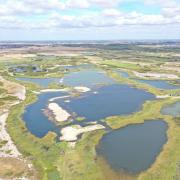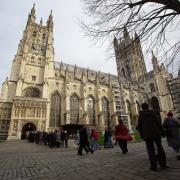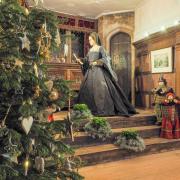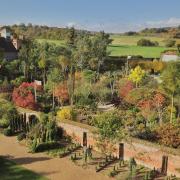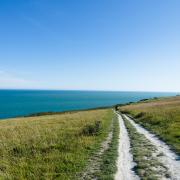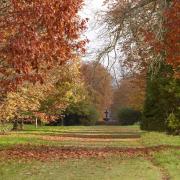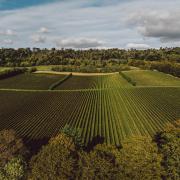It’s easy to become a bit obsessed with wading birds. They are scarce, which always adds some allure, the adults are beautiful, and the chicks are cute. You can also get great views of them in the right places, and those places are usually wild and interesting.
Kent is a stronghold for two species of waders called lapwing, also known as peewit, and redshank, both of which have relatively long legs and are happy getting their feet wet. Lapwing, which have characteristic rounded-ends to their wings, appear black and white from a distance, but up close they have iridescent green and purple upperparts, topped off by a proud crest. These features, combined with a strange metallic song, are used for their swooping display flight during the breeding season. Once a familiar sight, the UK population has reduced by 59 per cent in the last century. Redshank, which have declined by 49 per cent since the 1990’s, appear mostly brown in colour with bright red legs (the ‘shanks’) and a red-orange bill. These birds are full of character and their song is a modest ‘teu-hu’.

For both species, coastal grazing marsh is vitally important habitat. Also known as wet grassland, grazing marsh is a man-made habitat that has been reclaimed from the sea. It was formerly saltmarsh, subject to the effects of the tides, but now, protected by sea walls, has become a freshwater habitat. Because it retains the original creeks and small streams, this new habitat has ready-made ponds full of aquatic insects that provide vital food for waders and their chicks. As these pastures are active farms, grazed by cattle and sheep, the grass sward is short, which suits ground nesting birds that need early warning of potential predators. This habitat also provides homes for water voles, dragonflies and thousands of wintering ducks and geese.
Since the 1930’s, 64 per cent of grazing marsh in the Greater Thames has been lost to development and conversion to arable. Remaining marshland was drained or abandoned, leaving waders with smaller areas to breed.

However, there is good news, as thanks to hard-working land managers like the family run farm at Elmley, action from conservation charities including the RSPB and Kent Wildlife Trust, and government support, there are now more places for waders to breed. As a result, there are more lapwing and redshank pairs around the Thames than there have been for decades.
Hundreds of hectares of habitat have been restored or created in recent years, providing the landscape-scale solution that wildlife needs. Great Bells Farm, a partnership between the Environment Agency and the RSPB, has been one of the most successful. The site designer Julian Nash used digital mapping software to make a 3D model of the wetland wader heaven that he wanted to create, and used this to direct the GPS-guided diggers and bulldozers that brought the site to life. Before the project started, Great Bells Farm had just one lonely pair of lapwing. Ten years later it recorded 90 pairs of lapwing and 60 pairs of redshank. This success has been replicated at other sites in Kent, providing a network of hotspots for wildlife.

However, as the climate changes, drier summers will occur, making it harder to maintain freshwater wetlands. We’ll need to make use of the water already in the landscape and adapt habitat to meet the needs of wader and other bird species that are moving North, such as black-winged stilt.
In the meantime, things are looking positive for waders in Kent, and I am hopeful that the cacophony of noise during balmy spring evenings on the marshes continues for years to come.
To find an RSPB reserve to see wading birds, visit rspb.org.uk





